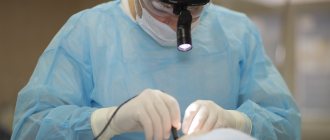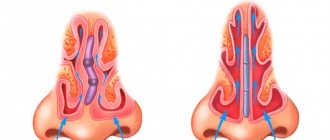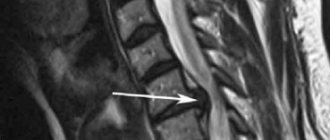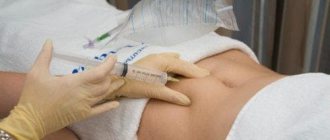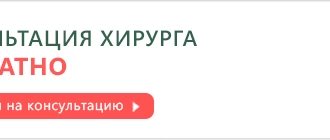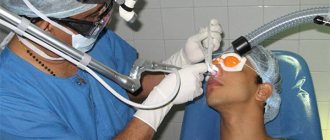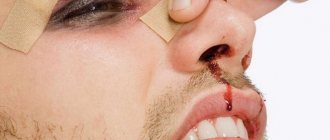The importance of nasal breathing is difficult to overestimate.
The state of human health directly depends on the unobstruction of breathing. In this process, the condition of the nasal septum plays a decisive role. The problem can only be solved with the help of septoplasty and plastic surgery of the nasal septum. During the operation, deformations of the osteochondral plate of the nose, which provoke snoring, bleeding and disrupt the dynamics of breathing, are corrected. The nose also performs an important function of humidifying and purifying the inhaled air. Septoplasty – surgical correction of the nasal septum
Patients often ask about the difference between septoplasty and rhinoplasty.
- The difference lies in the purpose of the operation:
- Rhinoplasty solves aesthetic issues: correction of the shape and size of the nose;
- Septoplasty corrects the nasal septum, improving the patient's nasal breathing.
Plastic surgeons at our clinic often combine rhinoplasty and septoplasty of the nose in one operation - rhinoseptoplasty. This helps solve the breathing problem and at the same time correct aesthetic defects of the nose.
- Indications for septoplasty:
- Difficulty in nasal breathing;
- Frequent nosebleeds;
- Heavy snoring;
- Dryness in the nasal cavity;
- Allergic reactions;
- Frequent headaches;
- Chronic diseases of the respiratory tract and paranasal sinuses: sinusitis, rhinitis, sinusitis, tonsillitis, etc.);
- Changing the shape of the nose.
Contraindications
- Contraindications for septoplasty are similar to those for rhinoplasty.
- Blood clotting problems;
- Viral and infectious diseases of the acute phase;
- Oncological diseases;
- Serious pathologies of the cardiovascular system;
- Diabetes;
- Severe diseases of internal organs;
- Immune system diseases;
- Age up to 18 years;
- Pregnancy, lactation.
“The surgeon’s task is to always be in touch with the patient and support him during rehabilitation. Of course, even before the operation, I must talk about all the nuances of the recovery process, even if the patient himself is not very interested in this. Then, for example, the patient will not be afraid of swelling, which, as is known, increases during the first 4-5 days.”
Tamarov Alexey Nikolaevich plastic surgeon
Preparing for surgery
As a rule, the preparatory period for septoplasty does not differ from standard recommendations for any planned surgical operation.
But there are additional features in terms of diagnostic criteria, for example:
- Carrying out computed tomography, if necessary, a comprehensive assessment of the osteochondral tissues of the face and paranasal sinuses.
- Endoscopic examination of the nasal cavity. Especially in the presence of polyps and other pathological formations.
- Consultation with an oral surgeon or dentist. For the rehabilitation of inflammatory areas in the oral cavity - especially pathologies of the teeth and gums of the upper jaw.
- Pediatrician consultation. In case of surgery on a child.
The laboratory complex includes a standard diagnostic “surgical” set:
- General blood test (including group and Rh factor) and urine.
- Study of prothrombin index.
- Basic blood biochemistry.
- Analysis for blood transfusion infections - HIV, syphilis, hepatitis.
If the patient has chronic diseases not related to the ENT organs, a preliminary consultation with specialized specialists, for example: a cardiologist, endocrinologist, etc., may be required.
It is also possible to temporarily cancel or change the regimen of medications - hormonal, anticoagulant, mucolytic, analgesic groups. All these points are discussed in advance with the treating specialist.
Carrying out septoplasty
Septoplasty can be performed under either general or local anesthesia. The choice of anesthesia is a matter that is decided by the surgeon individually. The duration of the operation depends on the technique and complexity of the case. The average duration of septoplasty is 1-2 hours.
A deviated septum does not always require septoplasty. To make an accurate diagnosis and identify indications, it is necessary to undergo a complex of studies (examination by an otolaryngologist, CT scan, x-ray)
During septoplasty, the surgeon makes incisions inside the nose, peeling away the mucous layer. The protruding part of the osteochondral tissue, which makes breathing difficult, is excised. Sometimes surgeons have to cut off the cartilage, adjust it, and “put it back” back.
The surgeon comments:
“A deviated septum can cause complications, including fusion of the sides in the nostril. I can say that several years ago I made a transition to a new stage: I began doing rhinoplasty with high-quality septum plastic surgery, as real ENT doctors do it. First, I perform a septum plastic surgery, open the airways, then perform a nose surgery.”
Septoplasty surgery can be performed using various methods: using traditional instruments, endoscopic techniques, and laser. However, regardless of the technique used to perform nasal septum surgery, the rhinosurgeon requires pinpoint precision and extensive experience in performing septoplasty. Excessive trauma to mucous tissues can cause scarring and poor breathing.
In almost half of the cases, rhinoplasty requires additional correction of the nasal septum
The surgeon comments:
“To improve breathing function, I perform organ-preserving surgery of the nasal septum, during which we remove not the septum itself, but its “excesses.” We preserve the bone and cartilaginous components of the septum. Technically this is quite a complex operation.”
Laser and endoscopic septoplasty
Some rhinosurgeons practice laser and endoscopic septoplasty. The advantages of laser septoplasty include an antiseptic effect and instant cauterization of blood vessels. Despite all the advantages of laser septoplasty, this method can only be used for minor deformations of the cartilaginous tissue of the septum. It is impossible to remove deformed bone parts of the septum with its help.
Endoscopic technology allows you to monitor the progress of the operation through a special video device - an endoscope. It is assumed that during endoscopic septoplasty, the surgeon can perform complex manipulations, avoiding the negative consequences of the operation. The use of modern techniques is not always justified. Septoplasty (correction of the nasal septum) requires the doctor to have extensive experience and knowledge in ENT surgery.
Doctors at our medical center perform septoplasty using the classical method, in most cases combining it with aesthetic rhinoplasty. The traditional approach to nasal septum surgery makes it possible to better predict the outcome of the operation, minimize the risks of complications and fully solve functional problems of the nose.
Progress of septoplasty
- If the nasal septum is deformed, septoplasty is performed in several stages:
- Conducting local or general anesthesia;
- Surgical correction of the nasal septum: the surgeon peels off the mucous membrane, removes deformed osteochondral tissue (mainly through closed access);
- Stitching;
- Installation of turundas and fixation of the nose with a plaster cast.
How is the operation performed?
Septoplasty proceeds as follows:
- First of all, the question of the method of anesthesia is decided. Septoplasty can be performed under local or general anesthesia; this is decided individually with each patient.
- A special probe is inserted into the nasal cavity, at the end of which there is a microscopic camera.
- Depending on the type of operation, various instruments can be used (radio wave apparatus, laser, scalpel). They allow the doctor to access the cartilage of the nose.
- The doctor treats the septum and straightens it.
- To prevent the cartilage from moving after removal, a special mesh is placed on it. It creates a strong frame, and after some time it dissolves on its own.
- The septums are fixed in the middle position with tampons on both sides. Self-absorbing sutures may be placed.
- For a more reliable fixation, a plaster cast is applied to the outside of the nose.
Most often, when performing operations on the septum, minimally invasive techniques are used - radio wave or laser surgery. Their advantages: reduced risk of complications, minimal blood loss, low trauma and a shorter recovery period.
Rehabilitation after septoplasty
The postoperative period after septoplasty (correction of the nasal septum) takes about three weeks, but we can talk about final recovery only after 2-3 months. In the first few days, the patient has to breathe exclusively through the mouth, since there are fixing tampons - turundas - in the nose. Some patients in the period after septoplasty experience a slight increase in body temperature, dry mouth, and sometimes dizziness and nausea. This is a normal reaction of the body to surgery; usually all these symptoms disappear within 3-4 days.
You can return to work after septoplasty after 10-14 days
Swelling of the nose persists for about 1.5 weeks, then it subsides and you can return to everyday work. As after rhinoplasty, during the rehabilitation period after nasal septoplasty during the first month, you must adhere to a number of restrictions:
- Avoid excessive physical activity;
- Protect your nose from injury;
- Eliminate sauna, solarium, swimming pool and hot baths for 2 months;
- It is recommended to sleep on your back, try not to tilt your head forward;
- Avoid wearing glasses for the first time;
- Monitor your health - do not catch a cold;
- Avoid stressful situations.
According to reviews from our patients, during rehabilitation after septoplasty, the effect becomes visible as soon as the swelling disappears and the person can breathe through the nose again.
Rehabilitation period
For the first day after surgery, it is recommended to remain in a hospital setting under the supervision of doctors. If there are no complications, the patient is transferred to outpatient treatment.
After the operation, it is recommended to follow some rules:
- Eliminate hot, salty, spicy foods from your diet.
- Maintain your water balance: drink at least 2 liters of water per day.
- Limit increased physical activity until tissue restoration is complete.
- Do not drink alcohol during the entire rehabilitation period.
- To reduce pain after surgery, it is recommended to take painkillers. The doctor may also prescribe antibacterial and anti-inflammatory drugs.
- For two weeks after surgery, you will need to avoid baths, saunas and swimming pools, only warm showers are allowed.
- In the postoperative period, you should not touch your nose or press on the tip of your nose.
- To speed up the rehabilitation period, the doctor may prescribe courses of physical therapy.
- Periodically you will need to visit a doctor to clean the nasal cavity.
Consult your doctor if you have a high fever, severe pain, or bleeding after septoplasty.
Septoplasty: complications
Difficulty breathing in the first days after septoplasty is normal and is considered a temporary complication after nasal septoplasty. As a rule, after the nasal packing is removed and the swelling disappears, breathing returns on its own. Less common complications after septoplasty (correction of the nasal septum) are:
- Bleeding from the nose;
- Perforation of the septum;
- Long-lasting hematomas;
- Severe pain;
- Abscess of the nasal septum;
- Fibrin clots in the nose.
To reduce the risk of complications after septoplasty surgery, it is important to approach the operation correctly at the preparation stage, and after plastic surgery, follow the surgeon’s recommendations.
In our clinic, septoplasty is performed by experienced plastic surgeons, so the risk of any complications is minimized. Swelling and difficulty breathing in the first days after septoplasty are temporary complications that disappear after 1-2 weeks
Deformation of the nasal septum is a condition that requires mandatory surgical intervention. In addition to possible external imperfections, this pathology often causes serious health problems associated with a lack of oxygen supply. A good result of surgery to correct the nasal septum can only be discussed after the final restoration of the nose.
Should septoplasty be done and, if so, where? These are the questions asked by most patients with a deviated nasal septum. Septoplasty in Moscow can only be performed with high quality and without consequences from a professional. The capital has the largest concentration of nose surgery surgeons. However, before deciding where to have septoplasty in Moscow, it is important to understand that the nose is a complex structure, and the rhinosurgeon must have extensive experience in performing this type of correction. Do not hesitate to ask the doctor about his experience and education. The results of the rhinosurgeon’s work and online reviews about him will help you decide on the doctor and clinic where it is better to have septoplasty.
In turn, the clinic must meet all safety and quality requirements. Rhinosurgeons of our medical center are doctors and candidates of medical sciences who have a high qualification level, impressive experience, and thousands of grateful patients. The final decision on where to have septoplasty should be made only after a personal consultation with a doctor. We invite you to a free in-person consultation with our surgeons; specialists will fully tell you about all the features of septoplasty, examine your nose and draw up a surgical plan.
Indications
According to statistics, almost 60% of people have a deformed nasal septum. The cause is factors such as facial injuries, congenital structural features, results of poor-quality plastic surgery, and much more.
Doctors recommend septoplasty in cases where a deviated nasal septum provokes threatening symptoms. These include:
- Periodic or constant decrease in sense of smell;
- Difficulty or complete absence of nasal breathing;
- Frequent nosebleeds;
- Visually noticeable nasal defect;
- Frequent relapses of otolaryngological diseases or their transition to a chronic form;
- Dryness in the nasal cavity;
- Decreased hearing ability (tubo-otitis or eustachitis);
- Night snoring, apnea;
- Frequent headaches or dizziness that occur due to lack of oxygen.
Note that a deviated septum in itself is not an indication for surgery. The decision on surgical intervention is made by the doctor, focusing on complaints and pathological symptoms.
Causes of a deviated nasal septum
- Genetic factor. This includes any reason why a person has a deviated septum from birth or from a certain point in life without the intervention of external factors. Impairments in fetal development, heredity, poor diet or deficiency of certain microelements - all this can lead to a deviated nasal septum.
- Compensatory reasons. This is the process of the formation of polyps, adenoids, swelling in certain diseases, a consequence of incorrectly done piercing.
- Injuries. One of the most common causes of a deviated nasal septum. It is especially common among athletes and representatives of professions associated with physical labor, among ordinary people after car accidents.
What is septoplasty?
Septoplasty is a fairly complex procedure in which the cartilage that forms the nasal septum is partially resected and reconstructed. With certain initial data, bone tissue is affected. High-quality septoplasty is only possible if the clinic is fully equipped; septoplasty is usually performed under general anesthesia.
DIY septoplasty is performed through small incisions inside the nostrils. If septoplasty is included in aesthetic rhinoplasty, it is optimally performed in an open manner, with a small W-shaped incision across the columella. In this situation, septoplasty can only be performed under general intravenous anesthesia.
Postoperative care
After the operation, sanitation is required - that is, rinsing the nasal cavity. The first time, the surgeon does this, and after that the patient can cope quite well on his own. The number of sanitation depends on the body: for some, healing occurs quickly and two or three procedures are enough, while for others it may take a month of rinsing.
At first, you should not blow your nose too much, as any excess irritation may cause blood to flow. The nose will dry out very much for some time, so it will be necessary to regularly carefully clean it of crusts and lubricate it with ointment.
Modern sutures are not removed, which immediately saves the patient from an unnecessary and unpleasant procedure. Inpatient treatment lasts no more than three days, then the patient is examined on an outpatient basis.
The difference between septoplasty and rhinoplasty
Septoplasty is a medical procedure that is not intended to correct the appearance of the nose. In contrast, rhinoplasty is a plastic surgery performed for aesthetic purposes. If a patient with a deviated septum also wants to change the size and shape of the nose, these manipulations can be combined.
In such cases, rhinoplasty is performed first to improve appearance. At the next stage, septoplasty is performed, which straightens the septum and restores normal nasal breathing. If it was not possible to combine these operations, an interval of about 12 months is maintained between them.
